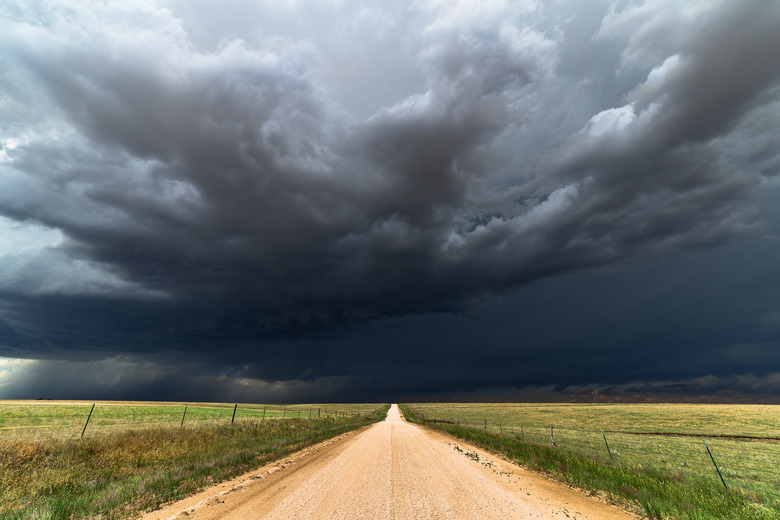What Happens When Barometric Pressure Rises?
The meteorologists you refer to on television and in the local newspaper use a variety of measurements to describe the current weather and predict the conditions you'll see tomorrow. Some of those measurements are very familiar, such as temperature and wind speed. Others may be a bit more confusing to the layperson, but no less important in forecasting. A case in point? Barometric pressure, the trend of which meteorologists key into to predict future weather.
Measuring Barometric Pressure
Measuring Barometric Pressure
Atmospheric pressure is simply the weight of the atmosphere above the Earth. It is also called barometric pressure because an instrument called a barometer is used to measure it. Many weather forecasts state barometric pressure in inches or millimeters of mercury; the "normal" or standard barometric pressure at sea level is 760 millimeters of mercury. Meteorologists, however, commonly use units called millibars to define barometric pressure, the sea-level standard being about 1,013 millibars.
Atmospheric pressure decreases with altitude, so in order to accurately compare barometric pressure for areas at different elevations meteorologist use a formula to correct measurements to the corresponding reading at sea level.
High Pressure
High Pressure
High pressure occurs where a broad column of air in the atmosphere sinks toward the surface. This very slow downward movement adds to the atmospheric pressure beneath the falling air, causing the pressure to be higher than in nearby areas where the air is not sinking. As air descends, it warms and contracts, which reduces or prevents the formation of clouds. Because of this effect, areas of high pressure often create clear, dry weather.
Low Pressure
Low Pressure
Zones of low pressure happen when a mass of air is rising, as when ground warmed by the sun heats up the overlying surface air and causes it to rise through convection. As the air rises higher in the atmosphere it expands because of decreasing surrounding pressure and cools. Cooler air can hold less water vapor than warmer air, so once the air parcel in a low-pressure cell reaches a certain altitude and thus cools to a particular temperature its water vapor tends to condense into clouds, and precipitation and stormy weather may result.
Changing Pressure
Changing Pressure
Low- and high-pressure zones move across the surface of the Earth. These mobile pressure cells create much of the significant weather we experience. Changes in atmospheric pressure often, but not always, predict the weather in coming days. Falling pressure suggests that a low-pressure zone with wet, stormy weather is moving your way. Rising barometric pressure is often, though not always, a sign that the weather will soon clear and turn fair and sunny.
Both rising and falling barometric pressure measurements are only one kind of evidence about upcoming weather. Meteorologists assess changes in barometric pressure along with many other factors to fine-tune their forecasts.
Cite This Article
MLA
O'Donahue, Kelvin. "What Happens When Barometric Pressure Rises?" sciencing.com, https://www.sciencing.com/happens-barometric-pressure-rises-23369/. 14 May 2018.
APA
O'Donahue, Kelvin. (2018, May 14). What Happens When Barometric Pressure Rises?. sciencing.com. Retrieved from https://www.sciencing.com/happens-barometric-pressure-rises-23369/
Chicago
O'Donahue, Kelvin. What Happens When Barometric Pressure Rises? last modified March 24, 2022. https://www.sciencing.com/happens-barometric-pressure-rises-23369/
